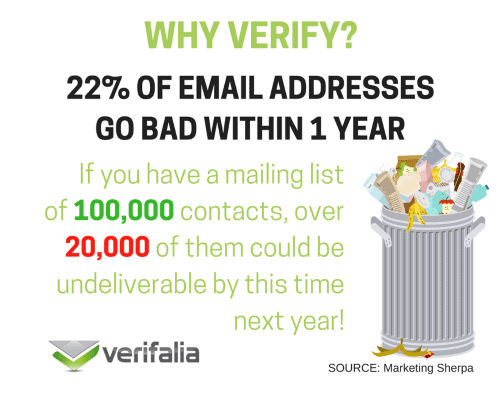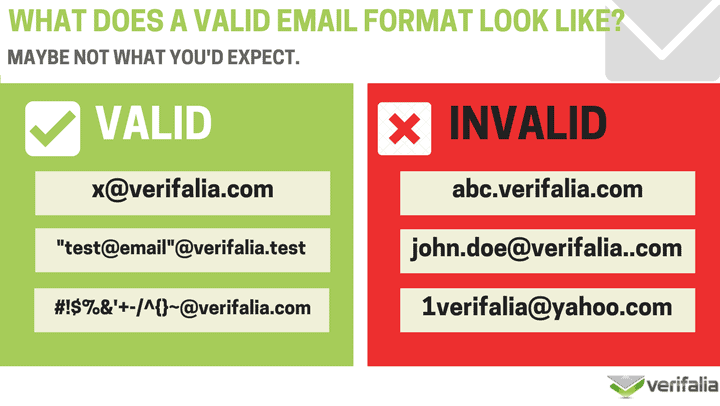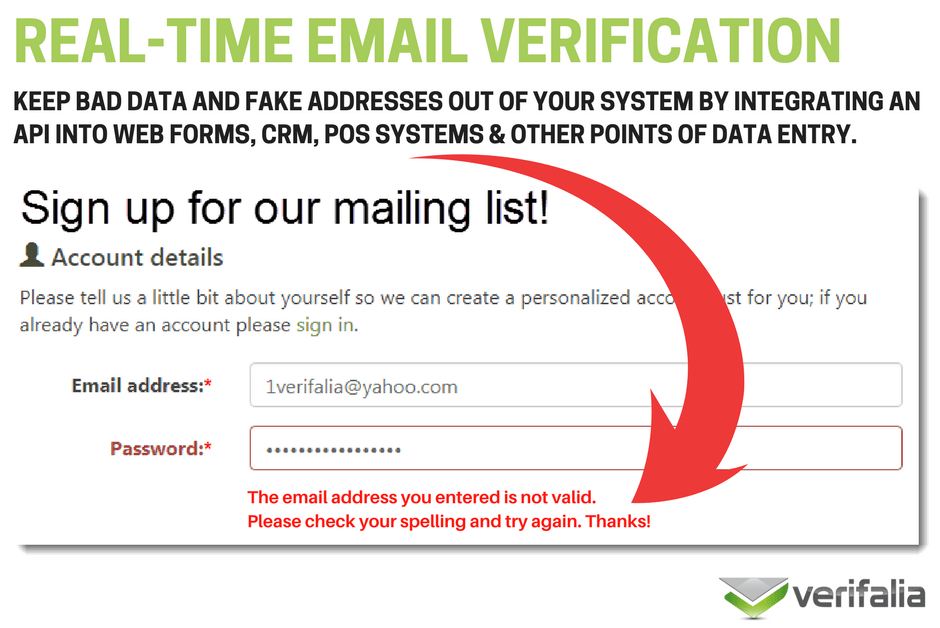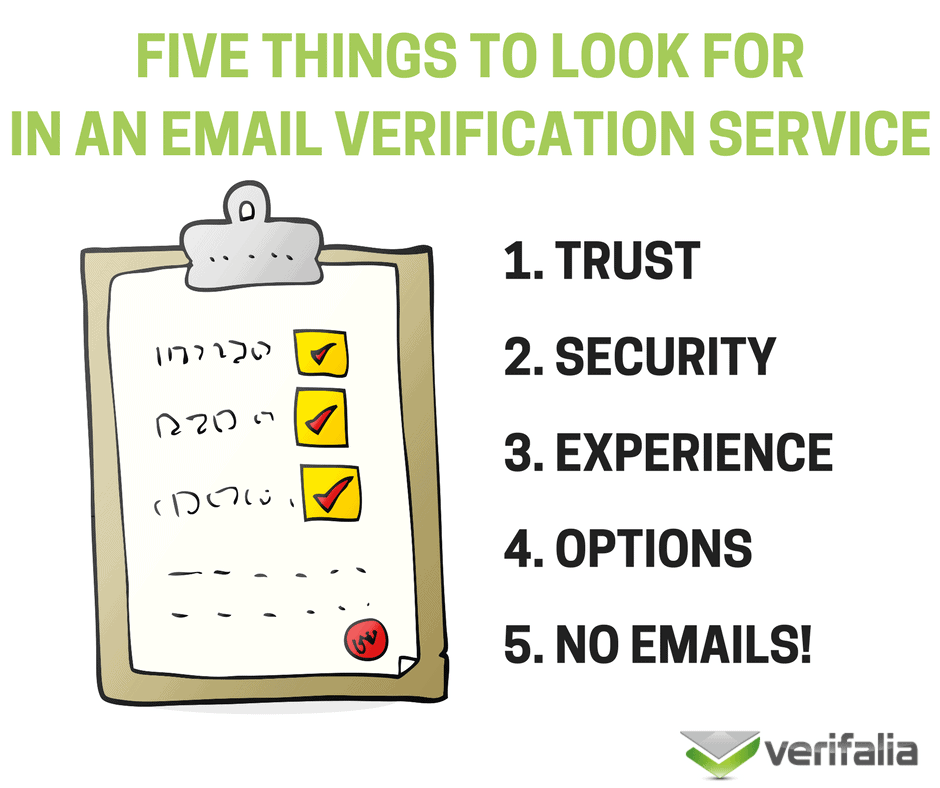Updated on: June 26, 2018
Let's start with a question: Would you drive your new truck for three years without changing the oil?
Of course you wouldn’t-- you’re smart, you’re conscientious, you read business blogs!
Yet, your customer email data is probably worth more than your truck. When is the last time you took your email list in for a tune-up?
Data needs love too. Without a little TLC your data will degrade quickly and cause you big problems.
That’s where an email verification service comes in—to help you clean up your customer data and eliminate the inactive, fake and risky email addresses that can crush your email deliverability stats or ruin your relationship with your email service provider.
What is email verification?
In digital marketing-speak, email verification, or email validation, refers to the process of confirming that an email address is active without sending an email.
Most importantly, this practice helps to both reduce your hard and soft bounce rates on email campaigns and protect the reputation of your outgoing mail server.
Read more about the benefits of email verification.
You can use an email verification service to execute a bulk validation of your entire mailing list or to verify incoming email addresses in real-time, utilizing an API integration to prevent fake sign-ups and ensure that invalid data never enters your system.
Real-time validation and double opt-in procedures help you collect a list of healthy and active contacts. But you still need to validate your data periodically to remove emails that become invalid over time.
 Why Verify?
Why Verify?
Depending on your business model, customer data could be your company’s most valuable asset. The Digital Marketing Association estimates that email marketing returns an ROI of 4300%-- good luck squeezing that kind of return out of your other investments!
That’s great, but customer data—specifically email data—doesn’t have an endless shelf life.
The gurus over at Marketing Sherpa have shown that email lists degrade at a rate of around 22% each year. That means that if you have 100,000 contacts, over 20,000 of their emails will be invalid within one year!

Bad data quality leads to low deliverability and open rates, meaning you get poorer results from your mailing campaigns. Continuing to send email campaigns to inactive accounts also will cost you money. Even worse, all those bounced emails will damage your sender reputation and they could get you booted by your email service provider.
Verifying your emails regularly—especially before big email campaigns—can help you avoid all of that trouble.
How Exactly Does Email Verification Work?
The email validation is a three step process, comprised of syntax and formatting check, server confirmation and mailbox validation, each taking just fractions of a second.
Step 1: Email Syntax & Formatting Check
The best email verification services instantly check your list of addresses against standardized email formatting requirements, as well as provider-specific formatting requirements for some major email providers (Did you know that a valid Yahoo email address can’t start with a number? It’s true!).
Email formatting rules are incredibly complex and it would be logistically impossible to check a large mailing list manually. Just look at the examples in the graphic below, would you know which of these emails are formatted correctly?
But a verification engine identifies issues within milliseconds in both the local part and the domain part of an email address: invalid characters, missing @ symbols, and an infinite number of others.

Step 2: Domain Confirmation
After validating the format of each address, the service checks the DNS records for the domain name to be sure that it is valid and active and tests the mail exchanger (MX) to ensure that it is able to receive mail.
If everything checks out with the syntax, formatting, domain, and server then the service moves on to validate the individual mailbox.
Step 3: Mailbox Validation
The final and crucial step of the process is to verify that the specific mailbox exists.
The service utilizes SMTP protocol to contact the mail server and verify that the mailbox is able to receive messages.
A legitimate email validation service does all of this without sending a single email message.
In most cases, the entire verification process takes less than 1 second. In other cases it could take somewhat more time, depending largely on the response time of the mail server under test. Older mail servers, busy servers, and sophisticated anti-spam systems can all affect the response time.
Risk Assessment Tools
Many verification services offer additional tools to help eliminate bad data or identify potentially problematic emails, such as:
- Duplicate email addresses
- Role Accounts
- Catch-All email servers
- Temporary email addresses
- Spam Traps
Not all providers offer all of these services, however, and some provide others not listed here. You should thoroughly vet the companies you are considering to be sure you get all the services that are important to you.
Reading The Results
Each email verification tool has a slightly different approach to displaying the results of their validation jobs, but the basics are the same—you can download a full report and/or view your results through a secure client area on the provider’s website.
In the case of API integration, the results are automatically returned to your system so it can either accept or reject the email under test.
Many services offer limited information in their results, such as simply stating if an email is valid or invalid. Some services offer more detailed results, indicating the root cause of any invalid or risky responses. Verifalia, for example, both provide the detailed results and the simplified classification.
One additional feature provided by just a few email verifiers is the possibility to set when a result is considered to be successful or not. In fact, not all results are as simple as valid or invalid; the decision on how to deal with certain types of responses depends on your goals as a company. With more information about the specific issue affecting your data, you can evaluate the risk associated with each response type and determine whether those results should be deleted, preserved or possibly tested again.

Real-Time Verification
Real-time email verification is the process of validating individual email addresses as they are entered into your systems.
Real-time verification is executed by integrating an email verification API with any system you use to collect customer data—a form on your website, your customer relationship manager (CRM), or any other point of digital data collection. This way, the data coming into your system is clean. No more fake email addresses clogging up your mailing lists!
API’s are designed to be invisible to the customer and easy to integrate: at Verifalia, for example, we offer software development kits (SDKs) for major development platforms and languages, which allow your software developer to integrate our email verification service with your CRM or app in just a few lines of code.
An email verification API is simpler and more cost-effective than you probably think and will save you both time and money in the long run.
Email List Cleaning
Email list cleaning, or bulk verification, is the process of submitting a mailing list or contents of a database to be verified all at once, allowing you to purge unwanted, inactive or fake email addresses from your lists. Lists can be uploaded manually for cleaning or transmitted through an API integration, either as needed or at regularly scheduled intervals. When the validation process is complete, it is usually possible to download all results in common file formats, such as .csv, .xls or .xslx.
Verification services handle lists from dozens to tens of millions of addresses with ease, so it’s a scalable service as appropriate for a multi-national corporation as it is for a small e-commerce business or upstart blog.
If you validate email addresses in realtime as they arrive via API, that’s great! But we still recommend cleaning your full list at least twice per year to keep your delivery stats from dropping to unacceptable levels due to list deterioration. Many companies prefer to do so more frequently, especially before sending any important communications.
How to Choose the Best Email Verification Service
 There are various email verifiers out there and, while we are partial to one of them, many of them are good, reputable companies.
There are various email verifiers out there and, while we are partial to one of them, many of them are good, reputable companies.
Still, each has its own algorithms, servers, programming, and optional services so they are definitely not all created equal. You should do some research and find which one is right for you.
Here are a few things to look out for as you’re choosing a service:
1. Trust: Who are these guys anyway?
This is the company you are about to trust with one of your company’s most valuable assets; don’t put your data at risk of being lost, stolen or sold.
Check their website to be sure they publish their physical address, phone number and support email. Contact them to ask some questions, make sure they respond and are informed.
2. Security: Protect your data
Examine their Terms of Service for policies on data security and retention. Be sure that all client services—including uploads, downloads, and reporting—always take place over HTTPS/SSL connections.
Ask where your data will be stored and how it is protected—not all countries take data security laws equally seriously. Overall, do your due diligence—don’t put your data at risk to save a few dollars with a discount provider.
3. Experience counts
The email validation process is complex and it takes time to develop the algorithms, databases and server reputation that are essential to doing it well.
The best services manage a large network of servers spread out around the globe to contact and communicate with mail servers in their preferred methods. They learn with time and update their systems and procedures continually.
4. Options, options, options!
No two businesses are alike and your email verification service should recognize that. A quality provider should provide multiple options for plans and varying levels of speed and accuracy, depending on your specific business needs. Moreover, each company shall have the possibility to decide if a specific validation result can be considered valid for its business or not.
5. No emails. Ever.
This is critical: a legitimate email validation service will never, ever send an email to the contacts you provide them. This is of absolute importance. Don’t trust any provider that sends emails as a part of their verification process.
Keeping your email data clean and accurate is key to any successful digital marketing strategy.
Now you have the basic knowledge you need to develop a plan for your organization in order to improve your deliverability, reach more of your customers, and convert more sales. So go verify that email list!

